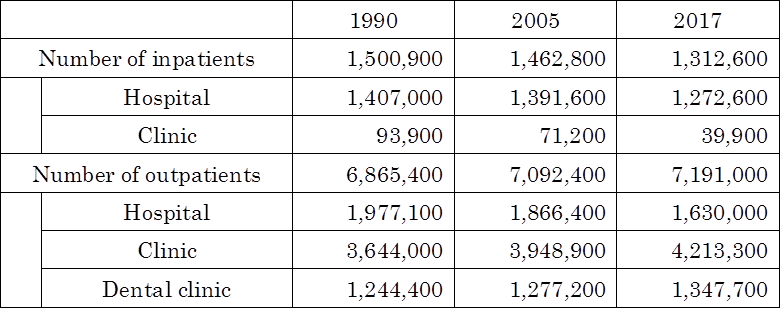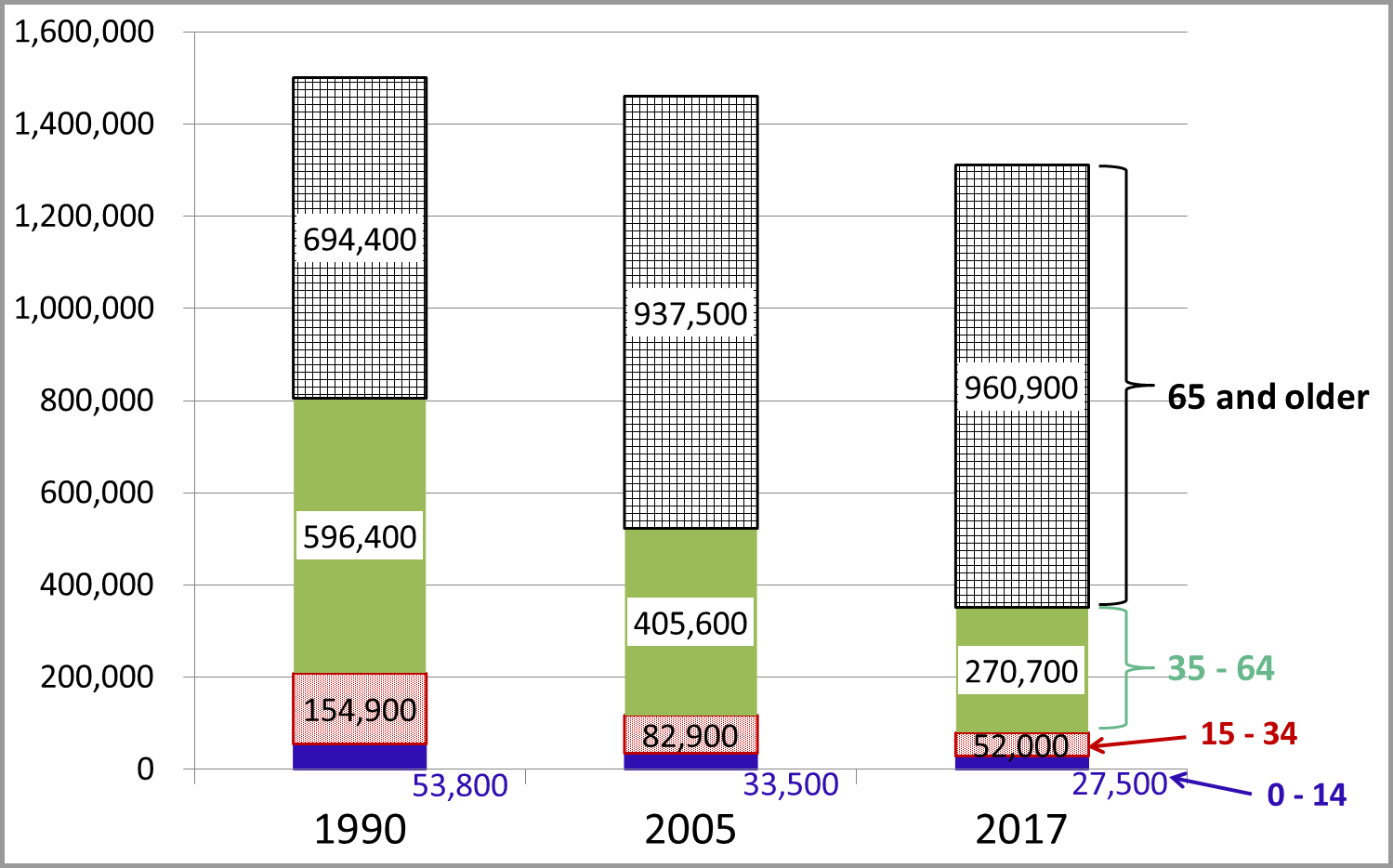Column Finance and the Social Security System 2019.03.20
【Aging, safety net and fiscal crisis in Japan】No.174: Number of inpatients and outpatients
In this column series, Yukihiro Matsuyama, Research Director at CIGS introduces the latest information about aging, safety net and fiscal crisis in Japan with data of international comparison.
Healthcare
In March 2019, the Ministry of Health, Labour and Welfare released the results of a patient survey conducted in 2017. This survey collects patient data of medical institutions on a given day in October every 3 years and estimates the number of patients nationwide.
As shown in Table 1, the outpatients remain unchanged from 2005, but the number of inpatients continues to decrease. This is because the number of inpatients aged 0 to 64 years has decreased sharply. As shown in Figure 1, the number of elderly inpatients (people aged 65 or older) has increased from 694,400 in 1990 to 960,900 in 2017. The proportion of elderly among the outpatients has also increased (Figure 2).
Table 1: Number of patients by type of medical institution
 Note: In Japan, a facility with 20 or more beds is defined as a hospital, and a facility with 19 or fewer beds is defined as a clinic. The total does not necessarily match because it has been rounded off.
Note: In Japan, a facility with 20 or more beds is defined as a hospital, and a facility with 19 or fewer beds is defined as a clinic. The total does not necessarily match because it has been rounded off.
Source: Ministry of Health, Labour and Welfare
Figure 1: Number of inpatients by age group

Figure 2: Number of outpatients by age group

As shown in Table 1, the outpatients remain unchanged from 2005, but the number of inpatients continues to decrease. This is because the number of inpatients aged 0 to 64 years has decreased sharply. As shown in Figure 1, the number of elderly inpatients (people aged 65 or older) has increased from 694,400 in 1990 to 960,900 in 2017. The proportion of elderly among the outpatients has also increased (Figure 2).
Table 1: Number of patients by type of medical institution
 Note: In Japan, a facility with 20 or more beds is defined as a hospital, and a facility with 19 or fewer beds is defined as a clinic. The total does not necessarily match because it has been rounded off.
Note: In Japan, a facility with 20 or more beds is defined as a hospital, and a facility with 19 or fewer beds is defined as a clinic. The total does not necessarily match because it has been rounded off.Source: Ministry of Health, Labour and Welfare
Figure 1: Number of inpatients by age group

Source: Ministry of Health, Labour and Welfare
Figure 2: Number of outpatients by age group

Source: Ministry of Health, Labour and Welfare
